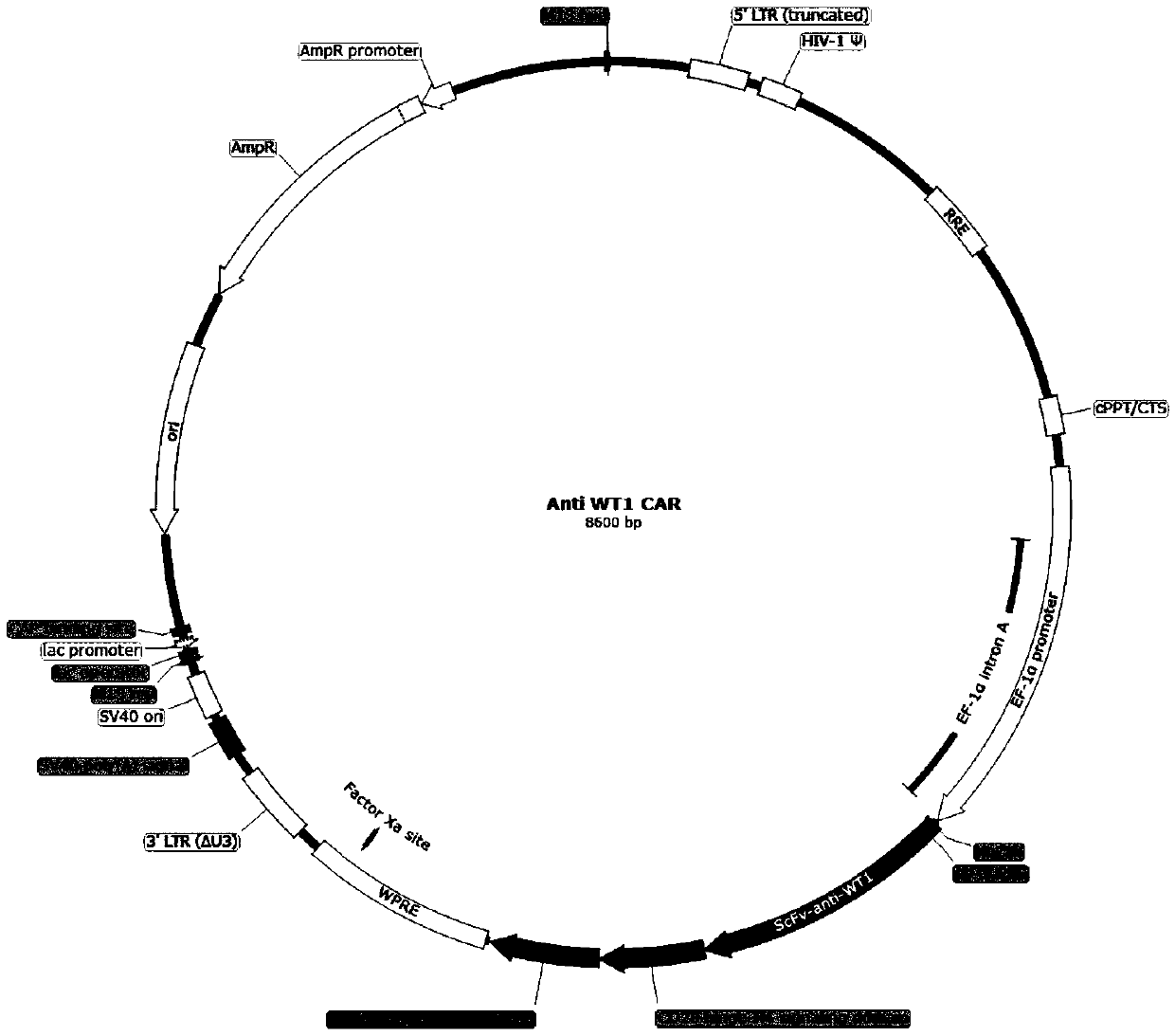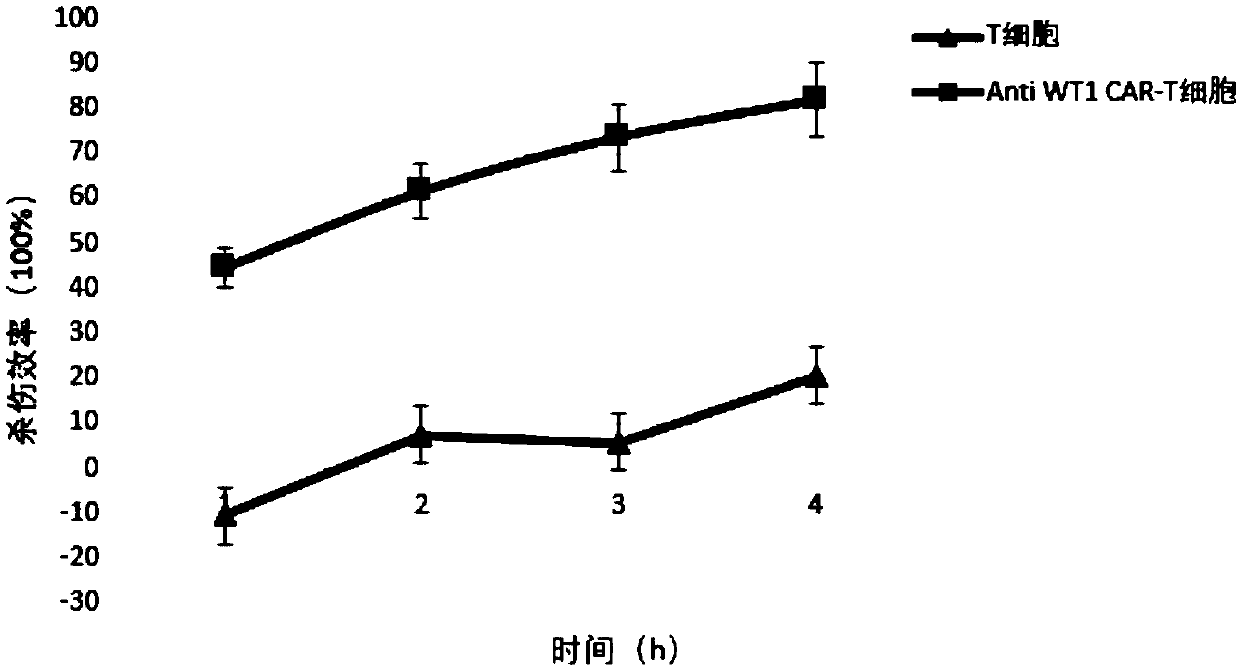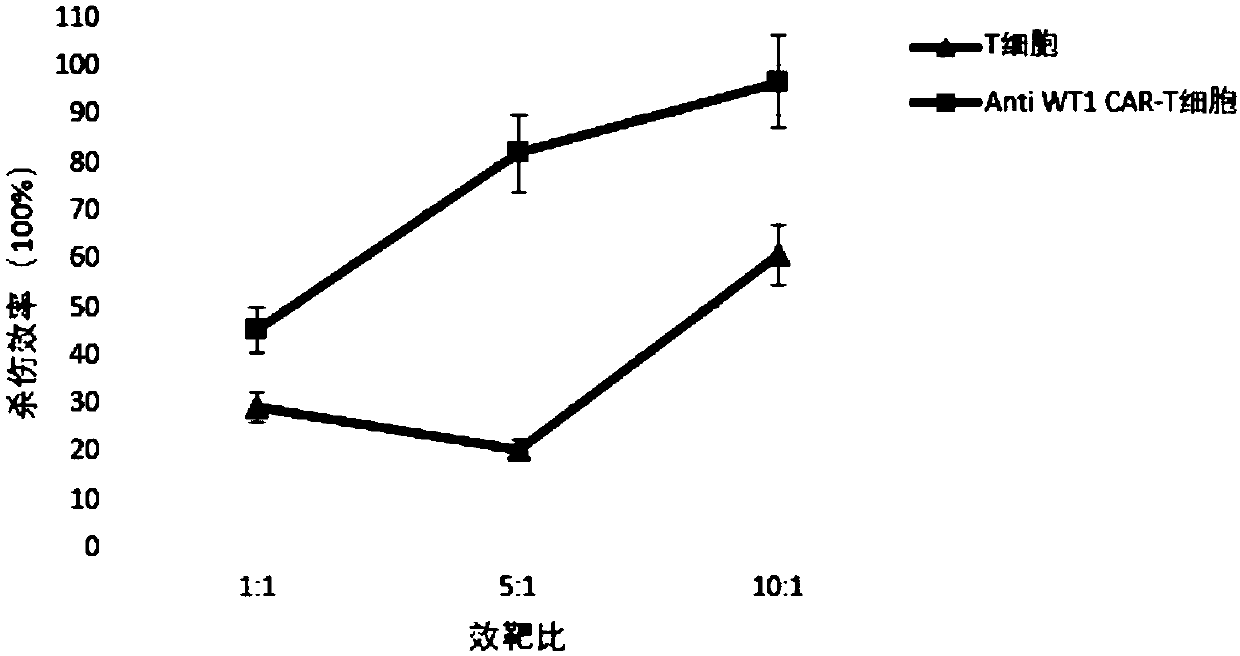Chimeric antigen receptor T cell targeted to WT1 and application of chimeric antigen receptor T cell
A chimeric antigen receptor and targeting technology, applied in the field of genetic engineering, can solve the problems of lack of immunogenicity, high specificity, and immune escape, and achieve the effect of high tumor killing activity and simple structure
- Summary
- Abstract
- Description
- Claims
- Application Information
AI Technical Summary
Problems solved by technology
Method used
Image
Examples
Embodiment 1
[0037] Example 1 Preparation of chimeric antigen receptor T cells targeting WT1
[0038] 1. Construction of lentiviral expression vector
[0039] Containing the nucleic acid fragment (BamHI-Sp-EcoRI-NheI-CD28-CD3zeta-SalI, synthesized by Zhongmei Taihe Biotechnology (Beijing) Co., Ltd.) encoding CD28-CD3ζ, as shown in SEQ ID NO.6, named as pGSI -seq8. 3ug pGSI-seq8 and recombinant lentiviral vector plasmid pCDH-EF1 (Addgene) were double-enzyme-digested with BamHI and SalI restriction endonucleases respectively, and the digested products were recovered from the gel and ligated with T4 DNA ligase, ligated overnight at 4°C, and transformed For DH5α competent cells, take 100 μL of the bacterial solution and spread it on an LB plate containing ampicillin resistance, and culture it overnight at 37°C. Single clones were picked for colony PCR, positive clones were sent for sequencing, and the clones with correct sequencing results were saved and plasmids were extracted, named pCDH-E...
Embodiment 2
[0053] Example 2 In vitro anti-tumor effect of targeting WT1 chimeric antigen receptor T cells
[0054] Using the cell line K562 cells (human chronic myelogenous leukemia cell line) and Raji cells (human Burkitt's lymphoma cells) expressing WT1 in the lymphatic system as target cells, the WT1-targeting chimeric antigen receptor T cells prepared in Example 1 were used respectively Effector cells were prepared from T cells not infected with lentivirus (Anti-WT1 CAR), and the target cells were inoculated in a 96-well plate at a density of 10,000 cells / ml, 100 μl per well, according to 1:1, 5:1, and 10:1 effects. Target ratio Add effector cells to target cells, add CCK8 (Biyuntian) reagent at the same time, place in 5% CO 2 , 37 ° C incubator continuous culture for 4 hours, during which the readings were made at 450nm wavelength every 1 hour, and the killing efficiency was calculated. The result is as Figure 2-6 As shown, the results indicated that chimeric antigen receptor T c...
Embodiment 3
[0055] Example 3 In vivo anti-tumor effect of targeting WT1 chimeric antigen receptor T cells
[0056] Get 30 female NOD SCID mice (purchased from Beijing Weitong Lihua Experimental Animal Technology Co., Ltd.) with a body weight of 25-30g at the age of 6 weeks, and inject 5*10 6 K562 cells, with a total volume of 0.1ml, 3 days after inoculation with tumor cells, mice were randomly divided into 3 groups according to body weight: control group, normal T cells (uninfected with Anti-WT1 CAR lentivirus) group and chimeric antigen receptor targeting WT1 T cell (prepared in Example 1) group; control group tail vein injection of normal saline 200ul / time, once a week, 2 times in total; normal T cell group tail vein injection of T cells 1*10 7 One per time, once a week, 2 times in total; In the group targeting WT1 chimeric antigen receptor T cells, inject anti-WT1 chimeric antigen receptor T cells 1*10 into the tail vein 7 Each time, once a week, 2 times in total; the survival status ...
PUM
 Login to View More
Login to View More Abstract
Description
Claims
Application Information
 Login to View More
Login to View More - R&D
- Intellectual Property
- Life Sciences
- Materials
- Tech Scout
- Unparalleled Data Quality
- Higher Quality Content
- 60% Fewer Hallucinations
Browse by: Latest US Patents, China's latest patents, Technical Efficacy Thesaurus, Application Domain, Technology Topic, Popular Technical Reports.
© 2025 PatSnap. All rights reserved.Legal|Privacy policy|Modern Slavery Act Transparency Statement|Sitemap|About US| Contact US: help@patsnap.com



